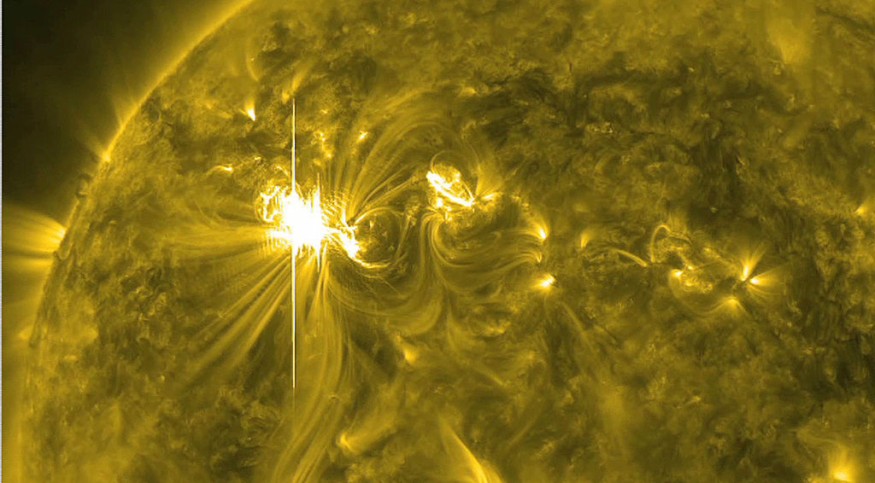SpaceWeatherLive, which tracks the activity of the solar system, recently reported that the Sun has been erupting every day since the beginning of February, with some days even featuring multiple bursts.
According to a ScienceAlert report, such an eruption comprises three of the second-most powerful flare classification, M-class flares. These include the M1.4 on February 12, followed by an M1 on February 14, and on February 15, another burst occurred. There were five M-class flares recorded, too, last month.
The past several weeks have indeed been a very busy time for the Sun. The Earth's star has gone through a series of "giant eruptions," sending plasma hurtling through space.
Probably the most intense was a powerful coronal mass ejection and solar flare that exploded from the distant side of the Sun on February 15, shortly before midnight.
Based on the size, perhaps the eruption was in the most powerful classification of which the Sun is capable, an X-class flare.

Effects Linked to Geomagnetic Storm
Since the flare and the CME were directed away from this planet, it is unlikely to see any of the impacts linked to a geomagnetic storm occurring when material from the explosion slams into the atmosphere of Earth.
These comprise interruptions to communications, auroras, and power grid fluctuations. However, the intensifying activity proposes that there may be an anticipation of such storms in the near future.
A Spaceweather.com report specified that according to Junwei Zhao, from the helioseismology group of Stanford University, this is only the second "farside active region of this size" since 2017.
If such a region stays large as it rotates to the Sun's Earth-facing sun, it could produce some "exciting flares," Zhao elaborated.
11-Year Activity Cycles of the Sun
A separate ScienceAlert report said the mild geomagnetic storm that hit 40 newly launched satellites of Starlink from low-earth orbit followed an M-class flare that occurred in late January.
Ejecta from a solar explosion typically takes a few days to reach this planet, depending on how fast the material travels. The remaining bursts that have occurred this month have been the C-class category which is milder.
Nonetheless, while it might seem intimidating, this is somewhat normal for the Sun as it's ramping up its activity towards and during solar maximum, "the most dynamic time during its activity cycle."
While the Sun appears pretty consistent here on Earth daily, it undergoes 11-year activity cycles, with an explicitly defined minimum and maximum.
Such a cycle is grounded on the magnetic field of the Sun, flipping around every 11 years, with its north and south magnetic poles swapping places.
Solar Minimum and Maximum
The solar minimum, categorized by sunspot and flare activity's minimal level, marks the end of a single cycle and the start of a new one, and it takes place when the Magnetic field of the Sun is at its weakest.
On the other hand, the solar maximum is due to occur in 2025. It can be challenging to predict how active each given cycle will be since it's unknown what's driving them, although scientists found evidence in 2020 that the earth might be entering the strongest cycle recorded at present.
Related information about the Sun's activity is shown on The Secrets of the Universe's YouTube video below:
Check out more news and information on the Sun in Science Times.












